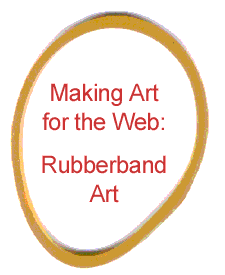 The Web is a place for democratic practice; it tests our limits and tolerance. It tells us truth, and lies, too. It collects information, while disseminating it all over the globe. It connects people, while isolating one another-- because it's a PC. It makes machine outwit humans, while forcing humans to note: it is only a machine. However, at this place in and between machines, some dreams of their dreams, some have made their dreams come true, some make artificial life a reality, and others found nothing but misery. Machines turn into the mirror of the Opera Phantom, into which Christine has entered, but others remain…
The Web is a place for democratic practice; it tests our limits and tolerance. It tells us truth, and lies, too. It collects information, while disseminating it all over the globe. It connects people, while isolating one another-- because it's a PC. It makes machine outwit humans, while forcing humans to note: it is only a machine. However, at this place in and between machines, some dreams of their dreams, some have made their dreams come true, some make artificial life a reality, and others found nothing but misery. Machines turn into the mirror of the Opera Phantom, into which Christine has entered, but others remain…
Fortunate ones share their dreams; Unfortunate souls share their misery. It is also a place for sharing-- sharing what is joy, what is misery, what is new, and therefore what is old. It acts like waves in the ocean-never stop moving and becoming. Your favorite article soon becomes: "the file is not found." When everything finally goes well, new versions of software are released and all the parts of the machine cry for updates. Then you long for good old days. … Thus, it keeps you running and running--running for unforseeable eternity, that might become a reality, or always a dream.
Thanks to the stupid machine, the Web is nevertheless built in and upon the machine, which has limits. This is its strength, as well as its uniqueness. Unlike traditional media-- books are too "inear and canvases are too square-- the Web is a fluid body that has no fixed size. Its size is in the hand of the user and the power of its facilities, thus democratizing aesthetics. Considering the frame of each Web page as a rubberband, it has a flexible ring, not a still frame. It stretches in accord with the use's action, and yet within its possibilities. Therefore, I shall call it "rubberband art."
Web design is a democratic practice-- leave something for people to decide.
 Copyright © 2006 Rita Chu.
Copyright © 2006 Rita Chu.